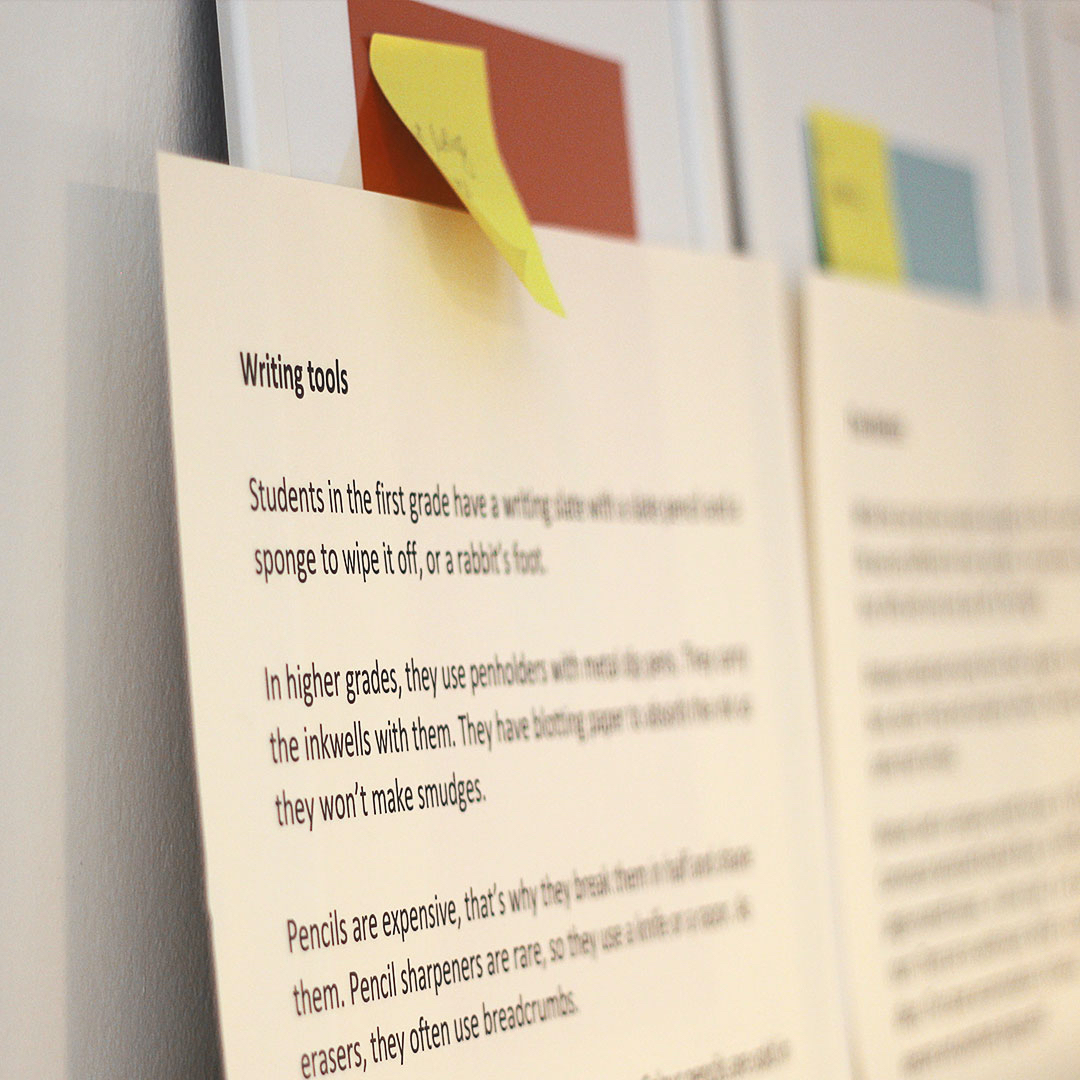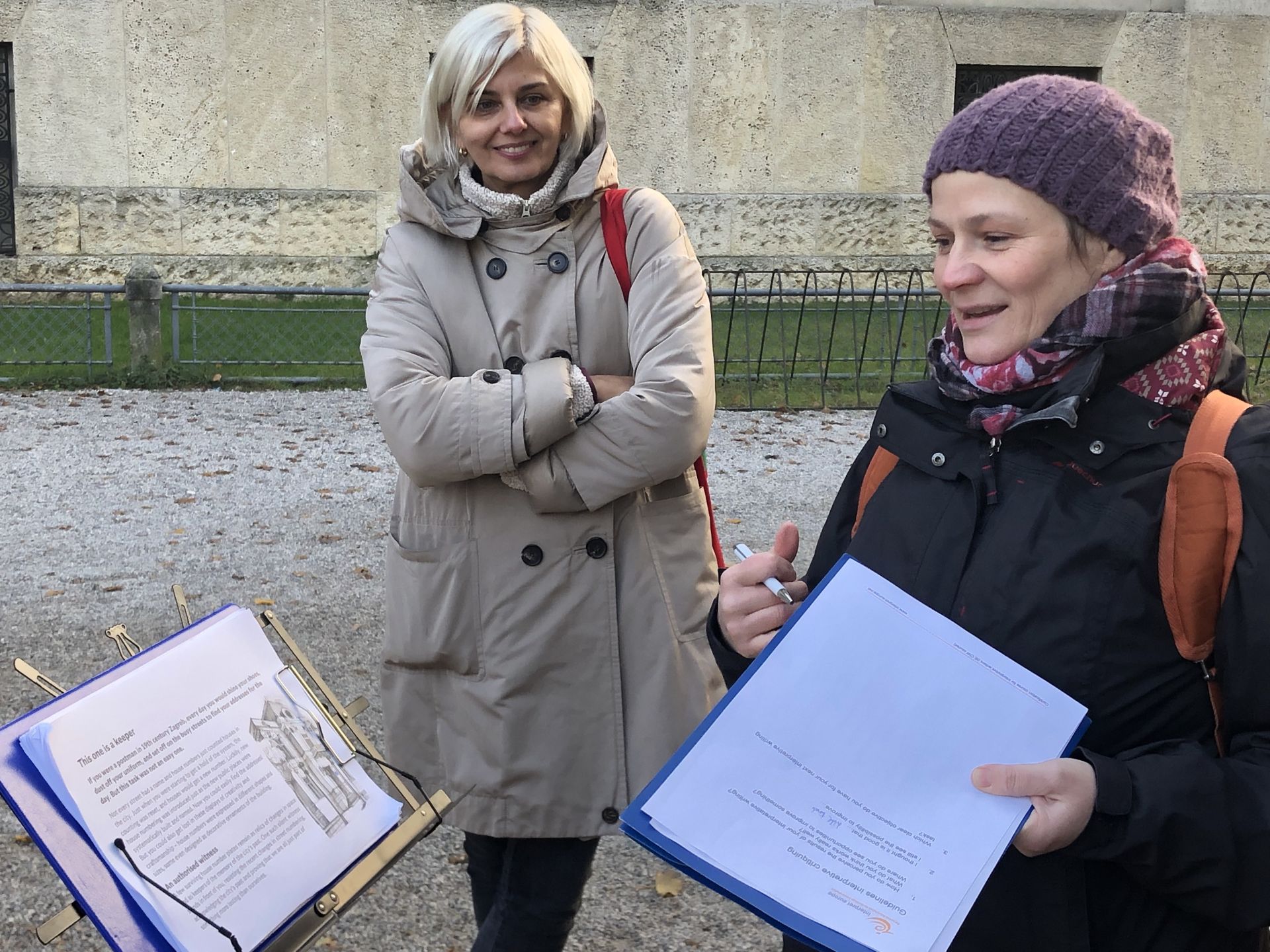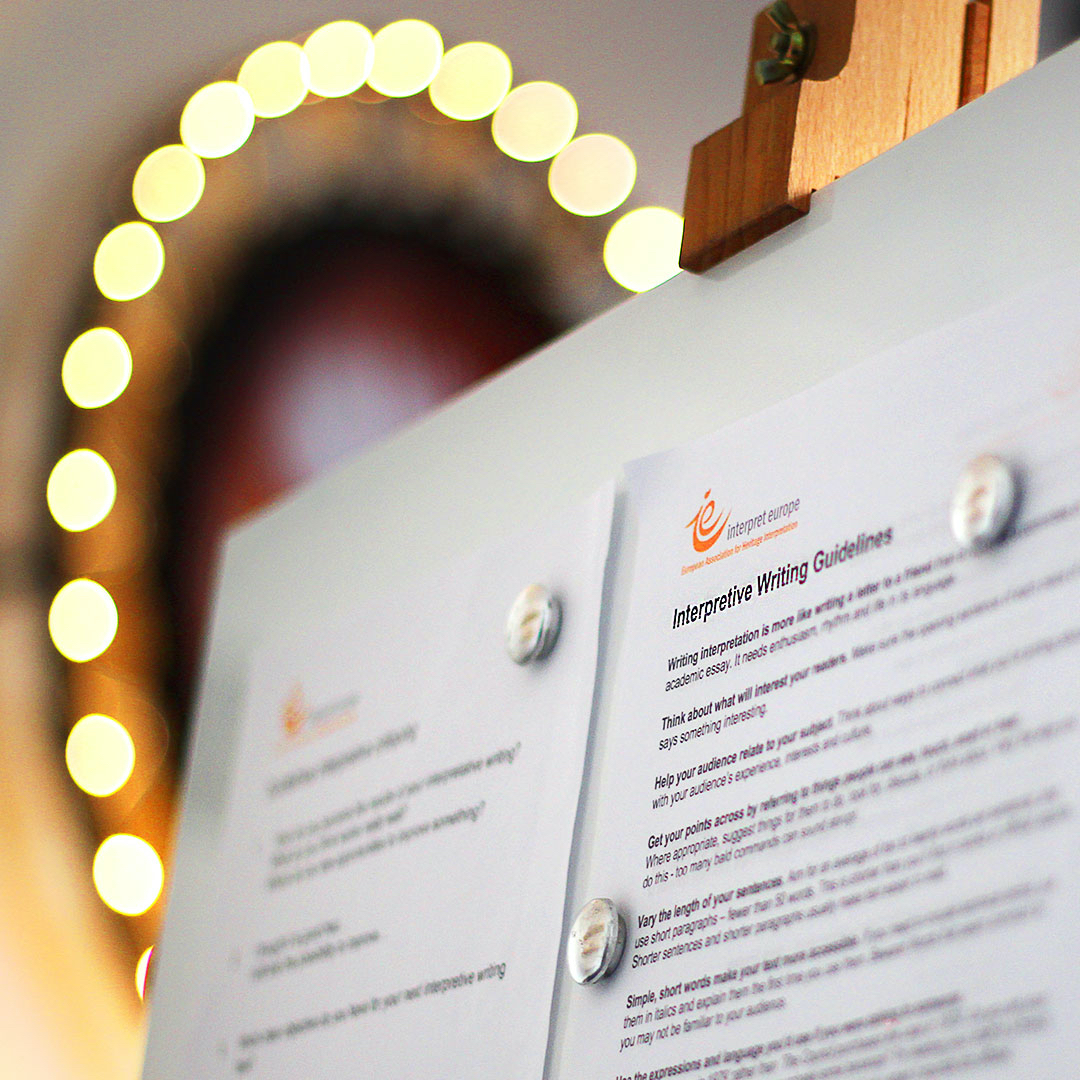

Harnessing the power of words for quality visitor communication
in parks, museum and protected areas
Start date: 29.08.2022 09:00
End date: 02.09.2022 17:00
Register by: 29.07.2022 00:00
From facts to meanings
Facts are forgotten in five-minutes but if you share what makes a site or place special and unique by connecting with your visitors’ lives and interests, it’ll be one of the highlights of their trip.
Connecting with your visitors is key
How many dull and uninspiring visitor attraction leaflets, web pages or panels have you seen? Complex terms you don’t understand? Too much information? Books on walls or pictures of what you can already see right in front of you? There are so many exciting and inspiring things we can say about a site or place but there are special ways to hit the sweet spot, avoid the pitfalls and make written text an integral part of the visitor experience.

Photo: Boris Plesa
24-hours a day
Good guides are great but they need to rest, eat and sleep. They can only take so many visitors a day on visits. Attention-grabbing leaflets, self-guided trail maps, web pages, audio guides, interpretive panels and labels are there 24-hours a day, every day. Crucially, they influence visitor choices on what to see and do before they even arrive at their destination.
Captivating stories
In interpretive writing, less is more. You can tell a captivating story in 100 words that connects with your visitors’ personal experiences. That’s what makes things memorable! You can transform the ‘boring and dry’ into the ‘fascinating and informative’ and inspire your visitors, by mastering a handy tool kit giving you all the necessary tips and tricks for great, original communication.

Understanding, enjoying, protecting heritage
If visitors truly understand a site or place, they will appreciate it and in turn feel compelled to protect it. They do this because they feel connected. Through interpretive writing techniques, you can reveal the significance of a site and influence visitor behaviour. You can provoke them into learning, thinking about their own experiences and how they relate to a place. That is the true power of words!
The training course
Certified Interpretive Writer (CIW): A 40-hour programme of practical individual and group-based exercises and essential theory, certified by INTERPRET EUROPE, the European Association for Heritage Interpretation. The course provides participants with a versatile tool-kit that they can apply to their own activities in English and in their mother tongue.
Learning outcomes
- Understand the origins and aims of interpretation
- Practice and master interpretive writing principles
- Facilitate first-hand experiences through writing
- Promote tangible and intangible heritage through writing
- Reveal meanings and relationships with natural and cultural sites and objects
- Select sites and objects to reveal their uniqueness and significance to visitors
- Engage with visitors to discover heritage by appealing to their intelligence, senses and shared values
- Create interpretive self-guided tours, audio guides, display panels and exhibition labels
- Create catchy headings and effective text hierarchies using simple language for information panels and exhibition display labels

Photo: Boris Plesa
Practicalities
- The course will be run in English and requires a good level of spoken and written English. Advanced levels are not necessary as the emphasis is on using simple vocabulary effectively.
- Some experience in writing for the public is advantageous.
- Step-by-step learning method, building on each day.
- Individual and group exercises indoors and outside.
- Final assessment to obtain Interpret Europe certification.
Your trainer
Sandy Colvine is Scottish and lives in the South of France but is a frequent visitor to Norway. He is a self-employed consultant with many years’ experience in local development and rural tourism all over Europe. He is also an experienced trainer, teaching heritage interpretation. He holds a Post-Graduate Diploma in Interpretation: Management and Practice, from the University of the Highlands and Islands and is a member of Interpret Europe, where he is a registered trainer qualified to teach Interpret Europe Certified Interpretive Guide and Interpretive Writer courses.
He is passionate about words and runs training courses from Norway to Greece. He takes a highly supportive approach, allowing people to surpass and even surprise themselves, to unlock and express their passion for natural and cultural heritage for the benefit of others.
About interpretation and Interpret Europe
Key terms from the four interpretive qualities are:
• Offering paths to deeper meaning
• Turning phenomena into experiences
• Provoking resonance and participation
• Fostering stewardship for all heritage.
Interpret Europe’s (IE) training programme was launched in 2015. It offers certification courses to support professionals who communicate natural and cultural heritage as guides, hosts, writers or planners and want to add the interpretive component to their work.
Practical information
The course is held in Trysil. Trysil is Norway’s largest ski destination in winter and are rich in natural- and cultural heritage. It has one national park and one regional park.
Read more about Trysil on Visit Norway. Plan your trip to Trysil | Activities, hotels, food and drink (visitnorway.com)
You have to book your own accomodation in Trysil. We will however make reservations at a central location, please contact us for further information.
All lunches and one dinner is included in the fee.
The weather in August can be quite chilly and wet (down to 0ºC), so remember to bring clothing that can keep you dry, since we will be out some of the time.
For a residential course, participants should arrive the night before the course starts and stay for the night after the course ended. This way, they would neither be distracted during the first sessions of the course by organising themselves at the venue.
How to get here
You can get to Trysil by taking the plane to Gardermoen, and then the bus from Gardermoen to Trysil. (2,5 h.) NW130 Trysilekspressen | Buss Trysil - Elverum - Oslo (nor-way.no)
You can also drive here by car. From Oslo it takes about 3 hours.
You can also take a train to Elverum, and go on the bus to Trysil there. Travel arrangements | vy.no
Interpret Europe`s organisation partner for the course is Norske Parker, The Norwegian Parks Association. www.norskeparker.no
More information about interpretation in Norwegian and Interpret Europe:
https://interpretasjon.no/
Home - Interpret Europe (interpret-europe.net)
 Surroundings and village centre. Photo: Jonas Sjögren/Trysil
Surroundings and village centre. Photo: Jonas Sjögren/Trysil